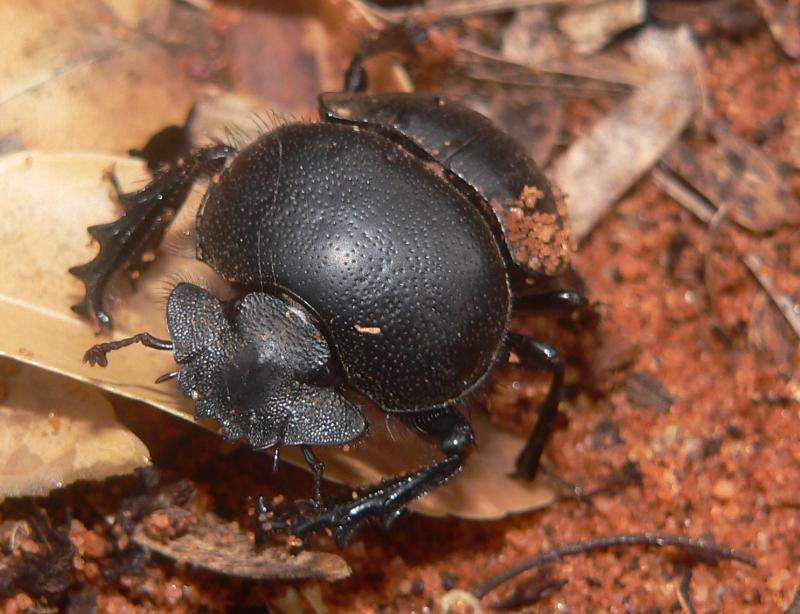Solving the great Australian poop problem

Cattle farmers deal with a lot of persistent crap—literally. And the humble dung beetle might just be the answer they've been looking for.
With an , each dropping 12 pats of dung per day, Australian livestock farmers have an immense poop problem. To make matters worse, poo makes for the perfect breeding ground for millions of bush flies.
So how do you solve a problem like fecal matter?
Two words. Dung. Beetles.
Without dung beetles, cow pats stick around for ages. Over time, grass rapidly grows around the nutrient-filled cow pats to create rank pasture. Understandably, the cattle want nothing to do with the poopy grass.
"Rank pasture takes up valuable grazing space where pasture would normally grow," says Rachel Mason, a Project Officer at the Mingenew-Irwin Group.
As part of the nationwide , the Mingenew-Irwin Group is trying to get rid of the crap by introducing dung beetles that are active all year round.
"You'll generally see dung beetles during spring and winter, because that's when you've got a really good feed source for livestock," says Rachel.
"But we don't really have any active during January to April."
And to fill that gap, the Mingenew-Irwin Group is introducing different varieties of dung beetles.
Mission dung-possible
Although Australia has over 500 native species of dung beetles, they have zero interest in the large, wet pats made by cattle. They much prefer the small dry pellets produced by other native Australian species.
Luckily, "the larger, introduced species like the bison, can't get enough of cow poo," says Rachel.
Living in a land dung under
to the Midwest region of WA bury the cow dung 15–30cm deep into the soil.
The beetles then feed on the dung, and the leftovers .
"The bigger beetles can bury deeper, around 30cm, which also means that they can get soil moisture all year round," says Rachel.
This is especially important for breeding, since beetles tend to lay more eggs in moist cow pats.
It's a trap!
The traps consist of a bag of cow poo and wire mesh placed over a glycerol tray. Beetles fall into the glycerol tray for Rachel to collect and count.
The dung beetle traps provide vital information about which species scoop the poop in the Midwest. And so far, the introduced species have been thriving.
Provided by Particle
This article first appeared on , a science news website based at Scitech, Perth, Australia. Read the .

















